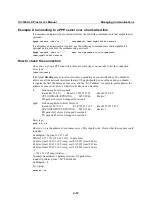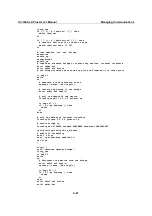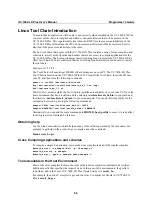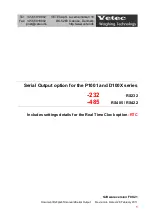
UC-7400-LX Plus User’s Manual
Managing Communications
4-16
optionxx
The option list for a machine describes the kind of access the machine will have. Important
options are:
ro
Read only. This is the default.
rw
Readable and Writeable.
no_root_squash
If
no_root_squash
is selected, then the root on the client machine will have the same level of
access to files on the system as the root on the server. This can have serious security
implications, although it may be necessary if you want to do administrative work on the client
machine that involves the exported directories. You should only specify this option when you
have a good reason.
root_squash
Any file request made by the user root on the client machine is treated as if it is made by user
nobody on the server. (Exactly which UID the request is mapped to depends on the UID of user
“nobody” on the server, not the client.)
sync
Sync data to memory and flash disk.
async
The async option instructs the server to lie to the client, telling the client that all data has been
written to the stable storage.
Example 1
/tmp *(rw,no_root_squash)
In this example, the UC-7400-LX Plus shares the
/tmp
directory to everyone, giving everyone
both read and write authority. The root user on the client machine will have the same level of
access to files on the system as the root on the server.
Example 2
/home/public 192.168.0.0/24(rw) *(ro)
In this example, the UC-7400-LX Plus shares the directory
/home/public
to the local network with
IP address 192.168.0.0/24, with read and write authority. NFS clients will just be able to read
/home/public
; they do not have write authority.
Example 3
/home/test 192.168.3.100(rw)
In this example, the UC-7400-LX Plus shares the directory
/home/test
to an NFS Client
192.168.3.100, with both read and write authority.
NOTE
After editing the NFS Server configuration file, remember to use the following command to restart
and activate the NFS server.
/etc/init.d/nfs-user-server restart
















































